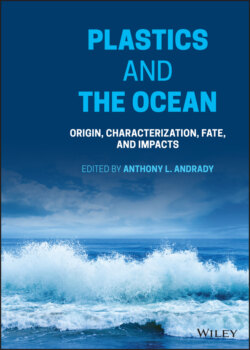Читать книгу Plastics and the Ocean - Группа авторов - Страница 46
2.2.7 Light Stabilizers
ОглавлениеPlastics are also susceptible to degradation via photo‐oxidation, which is the result of the combined action of light and oxygen, that follows a similar oxidation cycle as in thermal oxidation that was previously discussed (see also Chapter 8). Light stabilizers interfere with the physical and chemical processes of light‐induced polymer degradation. The most important light stabilizer classes are benzophenones, benzotriazoles, organic nickel compounds, and sterically hindered amines (HALS; Jia et al. 2007). UV absorbers, such as benzophenones and benzotriazoles, are extensively used to stabilize thick sections of polyolefins, poly(ethylene terephthalate) (PET), polyurethane (PU), poly(vinyl acetate) (PVA), natural rubber, and epoxy formulations. Organic nickel compounds quench or deactivate the excited states of chromophores arresting oxidation. HALS is a particular potent free‐radical quencher that is effective at very low concentrations (≈0.1%).
The protection of plastics from the effects of light can also be achieved through the addition of carbon black (CB) and other pigments such as titanium dioxide (Accorsi et al. 2001) that essentially shield the plastic from UV radiation. Light stabilizers significantly control the weathering of plastics exposed to sunlight as well as fragmentation via loss of MW from photo‐oxidation of the polymer. Typical loadings in plastics are relatively low, with <1%, and migration and toxicity have not received special attention.
